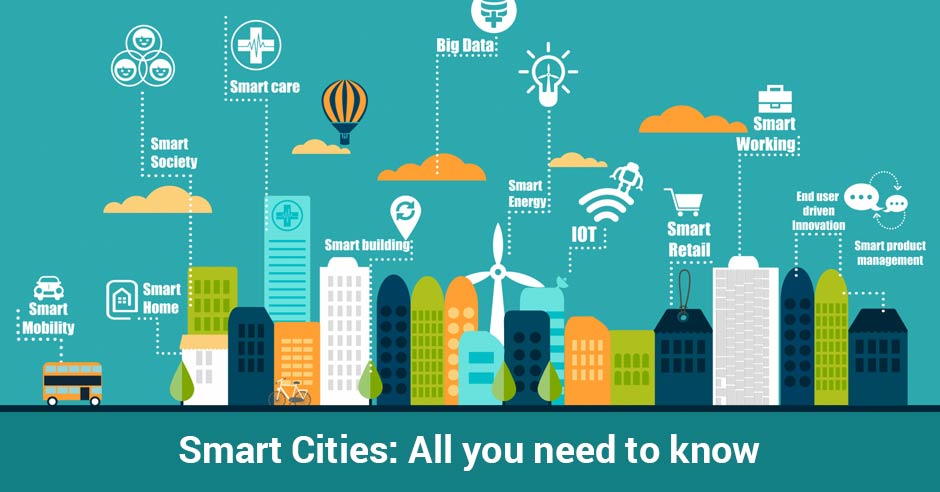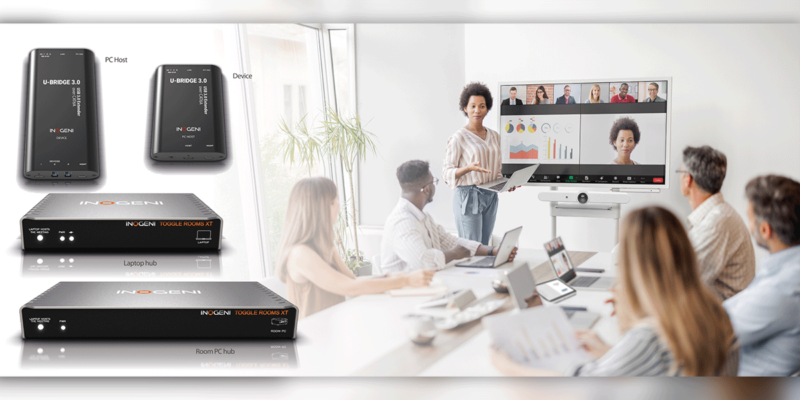Automation & Integration Rule The Nation
It’s 2018, cars drive themselves and run on electricity. We carry around at least one smartphone at all times and they are more advanced than the computers we used to send humans into space. Personal assistants are now virtual, built into watches, phones, tablets, computers, electronic accessories and they’ve got built-in artificial intelligence. Facilities, buildings and homes are now all smarter than your honor student. The world that surrounds you today pretty much works and functions with itself, one action triggers the next. You’re surrounded by a wondrous new world of technology that is learning and thinking for itself. This is the new normal.
 Your time is valuable and you only get so much allotted for just you. Between work and everything else you’ve got going on in your life, It can get a bit hectic and even overwhelming at times. It’s important that you spend your time wisely, and focus on the things that matter to you most. With all the advancements that technology has given us, 2018 has got your back when it comes to productivity for day-to-day living, working, traveling, communication and collaboration with friends, family and team members that span the nation(s). Our society has advanced to a time and age where things are connected to the internet & we use these same things to create, manipulate, store, and share information or media in the cloud. Now, let’s take each aspect of our lives, make them more streamlined and simplified and add value to them by making technology work for us, thereby freeing up time.
Your time is valuable and you only get so much allotted for just you. Between work and everything else you’ve got going on in your life, It can get a bit hectic and even overwhelming at times. It’s important that you spend your time wisely, and focus on the things that matter to you most. With all the advancements that technology has given us, 2018 has got your back when it comes to productivity for day-to-day living, working, traveling, communication and collaboration with friends, family and team members that span the nation(s). Our society has advanced to a time and age where things are connected to the internet & we use these same things to create, manipulate, store, and share information or media in the cloud. Now, let’s take each aspect of our lives, make them more streamlined and simplified and add value to them by making technology work for us, thereby freeing up time.
Let’s start with a few of the basics:
1. Smartphones: As previously stated, by now we all carry at least one of these compact computers that are fully cable of replicating everything you’d find in Best Buy’s “weekly ad / special deals” flyer. They can be used for communication, media creation and playback, shopping, file storage and much, much more. One of my personal favorite uses is controlling other devices and systems (media services and servers, lighting controls, HVAC, security, etc.). Smartphones can be used as your personal remote for the world that surrounds you. More and more manufacturers are connecting you to their products every day, they provide you with a shiny new app and now your neighborhood watch program becomes a caught on tape moment. Your camera system with two-way audio communication helps coordinate your groceries into the comfort of your home, simply by answering the doorbell via a popup on your screen, all while your out of the house. You can walk into the grocery store, scan your phone, grab anything on the shelf an walk right out without anything else needing to happen. You just go on about your business, assuming you’ve got sufficient in your bank account, and you’ve tied it to this service. Things don’t just work together automatically; you’ll need to do a bit of configuring, so you can reap the benefits of these integrations.
2. Smart Devices: It seems that everyday I see more and more companies connect their products to the internet and give you remote control via an app. Like it or not, this is the new normal. Lights, speakers, televisions, media streamers, virtual assistants, security cameras, security systems, irrigation, etc., can now be monitored and controlled via a smartphone. I live in California where power isn’t cheap, so I like to maximize my lighting efficiency by setting “home” and “away” modes based on my smartphone’s location. I plan on providing you plenty of other advantages of smart devices over time, and in the form of blogs or podcasts, but please note that many smart devices can do, or not do things, based on time of day or night conditions respectively. The more you setup and connect them with others, the more value is added, and time saved. Please be aware that not all smart devices are created equally; not all connected services and devices are able to, nor are they meant to work with others. That being said, there are plenty that do it well, and they offer a lot of value to you, if you correctly sync them together. You can even build a small, but limited, automated experience for the home. I’m not really sure that Smart devices could ever replicate the experience of a fully automated Smart home (at least not currently), but hey, it’s a good start.
3. Smart Homes: Here’s where we start to see extra added value really take off and be extremely helpful. A truly smart home can make decisions for itself based on parameters you’ve given it: If it’s too hot in a zone or an area, turn on the AC, but only if the blinds and windows are closed. If lights are on, turn them off if there is no movement, or if it is unoccupied, and only if it’s between a certain time of day or night. They add a luxuries & conveniences, such as the proving the necessary lumen output, which is determined by photosensors. Sensors to monitor flow, light, water, heat, and the list goes on.
They can also set schedules for alarms, access control, irrigation, network accessibility, heating and cooling, music scenes set to match the mood lighting set, and far more. In the past, these actions were done by you, all throughout your days and nights. Now we control and make changes to the flow of these actions based on unique voice recognition, and geolocation of smartphones or devices. What’s important to note is that smart homes have taken direction from smart buildings (More on this later). In my home, I’ve setup triggers for predetermined actions; “If this, then that”, so I can reduce energy bills, keep the house set to my preferred temperature without wasting unnecessary energy to achieve it, and for just a bit of that wow factor. You, know, because I can. Just so we’re all clear, I’m referring to far more than the really awesome/useful service, IFTTT. I’m speaking about integration and automation because this is the new standard for the modern home.
4.Smart Buildings & Facilities: Smart buildings aren’t really all that new in the sense that automation has been around for a long time, you just haven’t noticed unless your an integrator, building facilities manager, technology specialist, someone who works in IT, or something similar. Smart buildings and smart facilities, much like smart homes, also possess the ability to make decisions based on a number of factors. They can range from time of day or night, to temperature conditions.They load shed when unneeded areas are unoccupied and power can be distributed elsewhere. Music distribution can be triggered via voice command, or by movement, and there are numerous other automated applications that are being implemented when we take a look at industrial plants, automotive factories, or things like safety and emergency systems.
These systems have been improving processes and procedures for CEOs and presidents of fortune 500, and small companies alike. They’ve become so crucial to operations, that the very same CEOs an d presidents of these companies and facilities have brought these luxurious time savers home, and they have produced what’s called home automation. Within the wall of these buildings, I myself, along with team key team members, use a few different communication and collaboration software based applications to conduct business, and it allow us to maximize or work flow and structure.
Info is stored, viewed and shared remotely, all while integrating these services together so that we don’t have to waste unnecessary time searching for data. All this data is accessible from our connected homes and devices, allowing the capability of working remotely. Healthcare is a great example for this: back in 2008, the company I worked with at the time, was awarded an automation project for the home of a local doctor. He couldn’t stress enough how his network needed to be rock solid, as he was a doctor for hospitals up and down California, by way of “robots” similar to BeamPro. This is extremely common in healthcare now, so common that my fiance & I just had our first “Doctor Robot” experience at a local facility, in a smaller “nuclear free zone” city, between where we live, and the ocean.
5. Smart Mobility: I’m rather shocked, and slightly annoyed that we don’t have flying cars yet, but childhood dreams of futuristic sky pirate adventures will have to wait for now. As I previously mentioned, cars can now flippin’ drive themselves! If you’re not amazed, then you’re either Elon Musk or Nikola Tesla himself, Electric Jesus.
OK, cars are not fully autonomous as of yet, however they are very close. So close in fact, “Waymo, the autonomous vehicle division of Alphabet, Google’s parent company, reached an important milestone recently: since mid-October, the company has been operating its autonomous minivans on public roads in Arizona without a safety driver — or any human at all — behind the wheel. And starting very soon, the company plans to invite regular people for rides in these fully self-driving vehicles”. We have rideshare services that can pick you up and take you directly to a friend, even if you yourself are unsure where they’re at currently. Your smartphone knows exactly where they are, and will tell you, and the service of your choice, where your destination is.
Rapid transit and other public transportation can all be pre-paid with the same smart device, or extensions of those devices. Surprisingly, we have plenty of options to choose from these days, and traveling is a great time to catch up on messages, emails, conversations, workflow, etc. Now, back to driverless cars: Very soon, you’ll be able to catch a ride with a driverless car, and it will bring you from point A-to-B. That’s assuming you don’t already own one of these.
Driverless freight vehicles are already making their grand entrance into America and you probably won’t even notice the change, aside more accurate deliveries, that happen to be on schedule. Theses vessels all use the same schedules, rules of the road, are monitored by sensors, video surveillance when traveling through about their days. Perhaps not all internally, but definitely in some form or another.
6. Smart Cities: According to Wikipedia, “a smart city is an urban area that uses different types of electronic data collection sensors to supply information which is used to manage assets and resources efficiently. This includes data collected from citizens, devices, and assets that is processed and analyzed to monitor and manage traffic and transportation systems, power plants, water supply networks, waste management, law enforcement, information systems, schools, libraries, hospitals, and other community services. The smart city concept integrates information and communication technology (ICT), and various physical devices connected to the network (the Internet of things or IoT) to optimize the efficiency of city operations and services and connect to citizens. Smart city technology allows city officials to interact directly with both community and city infrastructure and to monitor what is happening in the city and how the city is evolving“. I completely agree with WiKi, although, I’d like to mention they are made up of and utilize the five previous examples.
Take a minute to recap everything that I told you is the new normal. Now think about how it works. Who’s managing & monitoring these systems to avoid failures, and who makes them all work together? Again, keep in mind that they don’t all just magically work together just because you’d prefer them to; some integrator(s), coder(s), engineer(s), architect(s) (physical or digital), needs to plan, coordinate, implement and manage all of this, and you live better, more productive lives because of it.





